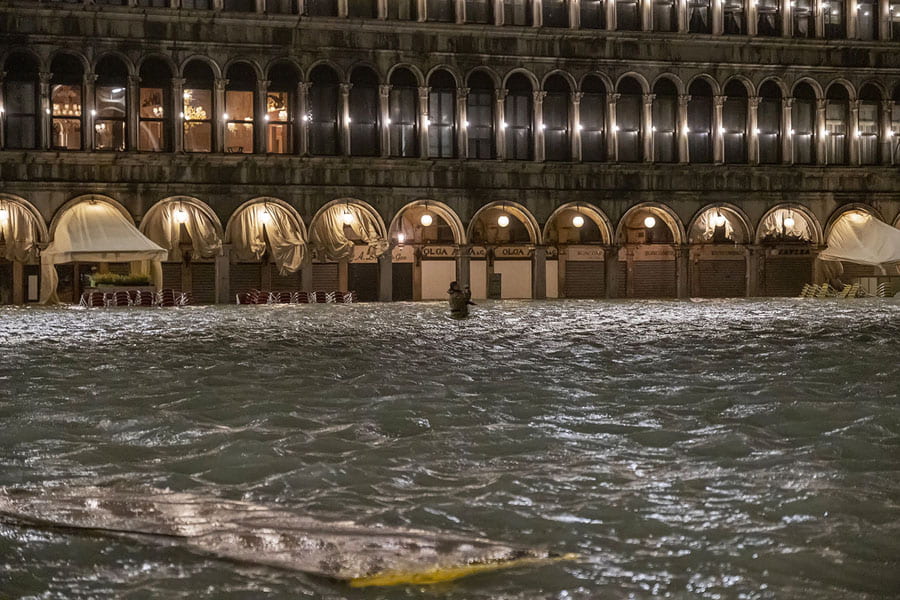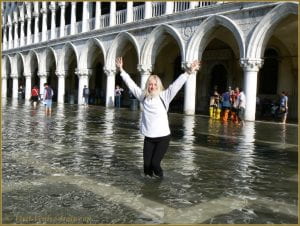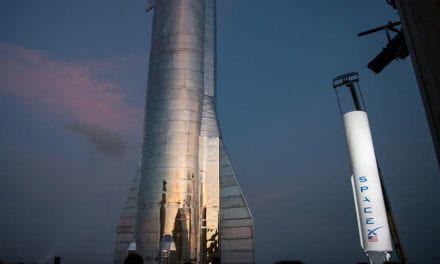This Thursday 14th November, the Italian government declared a state of emergency for the “Acqua Alta” that happened in Venice. The city has been hit by the worst flooding it has known in the last fifty-three years, the water having spread into churches, shops, museums and hotels.
Italian First Minister, Giuseppe Conte, announced on Twitter that the Italian Cabinet allocated twenty millions of euros “for the most important emergencies” to recover from the flooding.
The damages in the city have already been considered to reach “hundreds of thousands of euros”, according to Giuseppe Conte.
“The catastrophe that struck Venice is a blow to the heart of our country. It hurts to see the city so damaged, its artistic heritage compromised, commercial activities kneeling, “added Giuseppe Conte.
Tuesday’s record-breaking “Acqua Alta” swamped 80% of the iconic city. The natural disaster caused the death of a septuagenarian who was electrified while using an electric water pump, led to more than 400 firefighters’ interventions and caused gondolas and vaporetti to tip over.
For Environment Minister Sergio Costa, the fragility of Venice has increased due to the “tropicalisation” of the weather, with intense rainfall and strong gusts of wind linked to climate change.
“We are facing a tide more than exceptional. Everyone is mobilized to handle the emergency”, tweeted Luigi Brugnaro, who posted photos of a Venice submerged by water. “We need everyone to help us cope with what is clearly the effects of climate change,” he added.
Environmentalists also point to the expansion of the large industrial port of Marghera, located opposite on the mainland, and the crossing of giant cruise ships near the city.
Although the “Acqua Alta” is seen as a unique experience for tourists who enjoy taking selfies with water up their knees, local people are suffering from the situation. The decree will release funds of “5,000 euros for affected local individuals and 20,000 euros for local businesses,” said the Italian Prime Minister.
Many officials, including the mayor of Venice, Luigi Brugnaro, have called for putting into operation the project MOSE “as soon as possible” (MOdulo Sperimentale Elettromeccanico – Experimental Electromechanical Module)).
“This engineering work will end up costing six billion euros, it must be made to work,” said infrastructure minister Paola De Micheli.
Launched in 2003 and delayed by poor workmanship and corruption investigations, MOSE relies on 78 floating embankments that rise and block access to the lagoon in case of a rise of the Adriatic Sea up to three meters in height. Recent tests have identified vibrations and rust but, according to Conte, “93% of the project is ready” and will be “completed in the spring of 2021,” according to Italian Prime Minister Giuseppe Conte.
If you are planning on visiting Venice in the coming days, you can consult the forecasts of the “Acqua Alta” on the official website. You can also ask for information at the front desk of your hotel. They should know how much tide is expected for the next days.
For any information regarding the weather or the flooding in Venice, the most used site in Italy is www.ilmeteo.it.
Featured Image Source: Stefano Mazzola/Awakening/Getty Images







